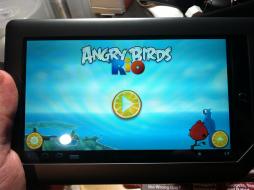games for good
Posted by AnneryanHeatwole on Jul 22, 2011
As mobile gaming explodes worldwide, the market for “games for good” (either with an educational or social-change focus) is open for growth. Mobile games provide a way to quickly pass time, an always-on-hand source of entertainment, and a way to connect with others through competing scores or sharing strategies. Can mobile games also be used to teach, inform, and raise awareness?
Level One: The Mobile Gaming Landscape
The current mobile landscape shows that games are popular worldwide, regardless of handset type or region. A June 2011 Gartner report on the state of the gaming industry reported that mobile gaming is expected to see the largest growth percentage of any aspect of the industry (compared to consoles and PCs), estimating “its share growing from 15 percent in 2010 to 20 percent in 2015.” Tuong Nguyen, principal research analyst at Gartner, is quoted as saying, “As the popularity of smartphones and tablets continues to expand, gaming will remain a key component in the use of these devices. Although [mobile devices] are never used primarily for gaming, mobile games are the most downloaded application category across most application stores, […] For this reason, mobile gaming will continue to thrive as more consumers expand their use of new and innovative portable connected devices.”
The growth of mobile games can be clearly seen in US mobile trends; a July 2011 report from Nielsen says that games are the most popular kind of app for smartphone owners, with 64% of US smartphone owners using a mobile game app at least once a month. The Nielsen report also found that “the average mobile gamer plays an average of 7.8 hours a month,” and that “those with iPhones tend to play around 14.7 hours each month while those with Android smartphones play around 9.3 hours per month.”
But mobile games aren’t just popular on smartphones; feature phone users are embracing the mobile gaming trend as well. MobiThinking’s 2011 global mobile statistic report found that among Africans who use mobile devices as their primary means of accessing the Internet, 55 percent report downloading games. OnDevice Research’s 2011 Mobile Internet Satisfaction report found that mobile games can influence handset purchase, as users want mobile devices that can support games. They report that, “89% of mobile media users in Kenya consider the quality of games they can play on their device when choosing a new phone.”
A 2009 report on India’s mobile gaming field from Vital Analytics found “approximately 120 million urban Indians used their mobile phones to play games during quarter ending July 2009, a reach of 41%. In terms of time spent playing games, 37% of the population spends less than an hour in a week playing games while on the other end of the spectrum 9% spend over 5 hours on an average.” The report also found that most popular types of mobiles games for Indian users were sports games (such as cricket) and arcade-style puzzle games.
With all these mobile gaming enthusiasts out there, where does that leave educational and social change games? Couldn’t some of this popularity be turned toward math, literacy, or advocacy games? The landscape shows that mobile games are popular regardless of handset and location, so the question now is how to make a game that provides both value and entertainment to the player.

